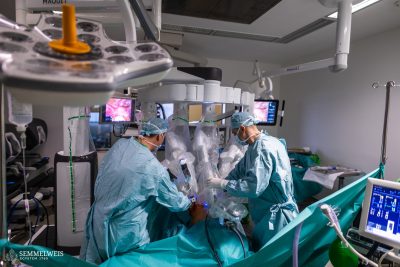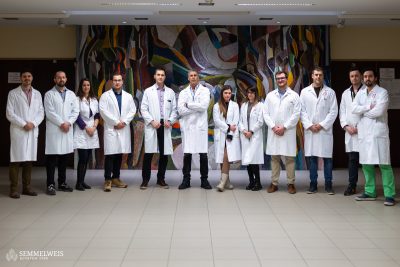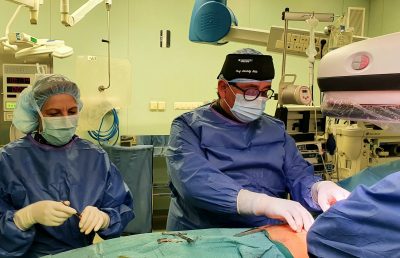Dr. Imre J. Barabás, resident of cardiac surgery at the Varosmajor Heart and Vascular Centre and his research team won the 2018 Innovation Award in the category of clinical research. In their project, they utilize computing technologies in imaging. The use of their own, highly specialized software enables dynamic parameters to be modelled to predict postoperative results, diagnose tumour lesions, and determine the exact location of tumours.
DICOM files are grayscale images used in medical imaging, from which different types of data can be obtained using different softwares. Dr. Imre J. Barabás studied medicine simultaneously with informatics and programming in the field of quantitative modelling at Pázmány Péter Catholic University, where he began to focus on how to extract more data from DICOM files than the current market softwares allowed. The software developed by the team differs from the large-scale 3D reconstruction programmes of large companies in that it is capable of displaying images created during imaging procedures dynamically, not statically, meaning that the 3D models can be modulated accordingly given the surgical question, and the surgical preparations can be made according to the relevant responses. The programme helps surgeons decide how big the particular tumour is, how large blood vessels and other adjacent tissues are affected, that is, whether the tumour can be removed and, if so, which surgical method is the most optimal for tumour removal – said the resident. With the software, we can find the most suitable incision point, reducing the time and invasiveness of the surgical procedure, he added.
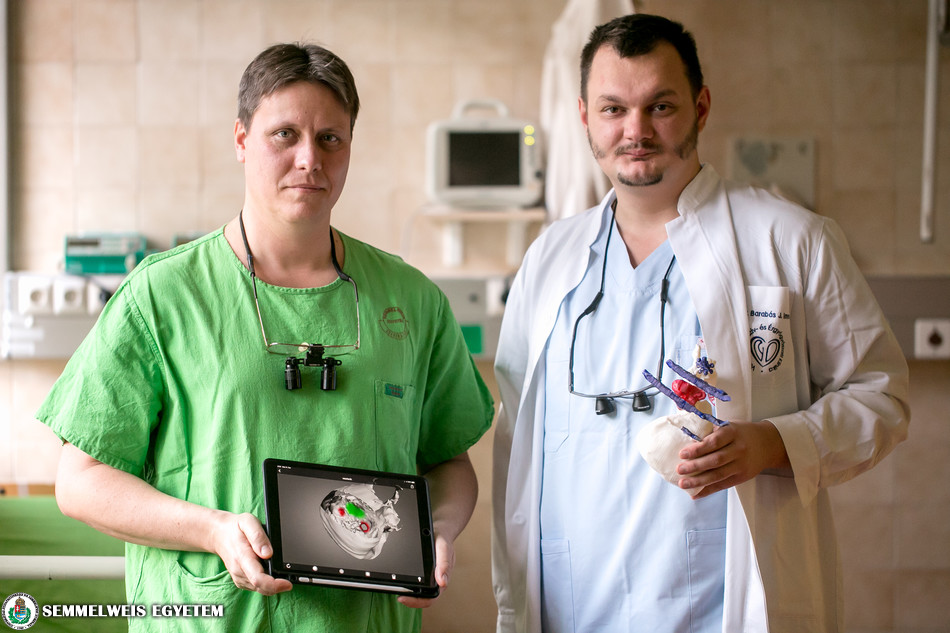
A case is currently waiting to be published at the Varosmajor Heart and Vascular Centre, where, contrary to initial plans, there was no need to open the chest to remove a left atrial myxoma; they went between the ribs instead. Surgeons were able to penetrate via lateral tracheotomy, as they could see on the 3D model that the tumour was not attached to any structure, he said. He added that surgeries had already been carried out with the help of the software at Semmelweis University’s Thoracic Surgery Department, which is part of the National Institute of Oncology.
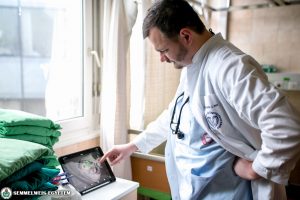 Dr. Imre J. Barabás said the programme was being used in more and more places. Besides the aforementioned clinics, the 1st Department of Paediatrics had already performed surgeries with the help of 3D reconstruction. For the time being, there is no capacity for wider distribution, but the long-term goal is to use the programme in planning routine operations. Thanks to the work of the Directorate of Innovation, the software has a proprietary patent (patent application number: P1800379), the resident said. The Innovation Award-winning resident has been refining the software for seven years, and has continued development together with a research team over the past two years, with members Dr. László Rosivall, Dr. Ferenc Rényi-Vámos, Dr. István Hartyánszky and Dr. Béla Merkely, who have all given a lot of help and support – stressed Dr. Imre J. Barabás.
Dr. Imre J. Barabás said the programme was being used in more and more places. Besides the aforementioned clinics, the 1st Department of Paediatrics had already performed surgeries with the help of 3D reconstruction. For the time being, there is no capacity for wider distribution, but the long-term goal is to use the programme in planning routine operations. Thanks to the work of the Directorate of Innovation, the software has a proprietary patent (patent application number: P1800379), the resident said. The Innovation Award-winning resident has been refining the software for seven years, and has continued development together with a research team over the past two years, with members Dr. László Rosivall, Dr. Ferenc Rényi-Vámos, Dr. István Hartyánszky and Dr. Béla Merkely, who have all given a lot of help and support – stressed Dr. Imre J. Barabás.
I started medical training at Semmelweis University in 2010 as a result of the fact that, due to my grandmother falling ill around admissions time, I was lucky to meet a truly compassionate doctor at the Kútvölgyi Clinical Centre – recalled Dr. Imre J. Barabás, who for a long time hesitated between the fields of engineering and medicine until the last minute, where he personally changed his admissions records in the Educational Authority. At first he wanted to be a neurosurgeon, but after seeing a heart surgery during his first year, he chose cardiac surgery. Dr. Zoltán Szabolcs and Dr. István Hartyánszky invited him to be a Scientific Students’ Association member at the Varosmajor Clinical Centre, and he won his first prize in informatics research in his third year of studies, followed by more laudations, including international prizes –explained Dr. Imre J. Barabás, who has been pursuing his PhD studies since 2016, has been working as a resident, is completing his MSc training in info-bionics engineering at Pázmány Péter Catholic University’s Faculty of Information Technology and Bionics, and mentors several Scientific Students’ Association members. Meanwhile, they are expecting their first child with his wife, who, as he said, is creating a truly supportive home environment for him.
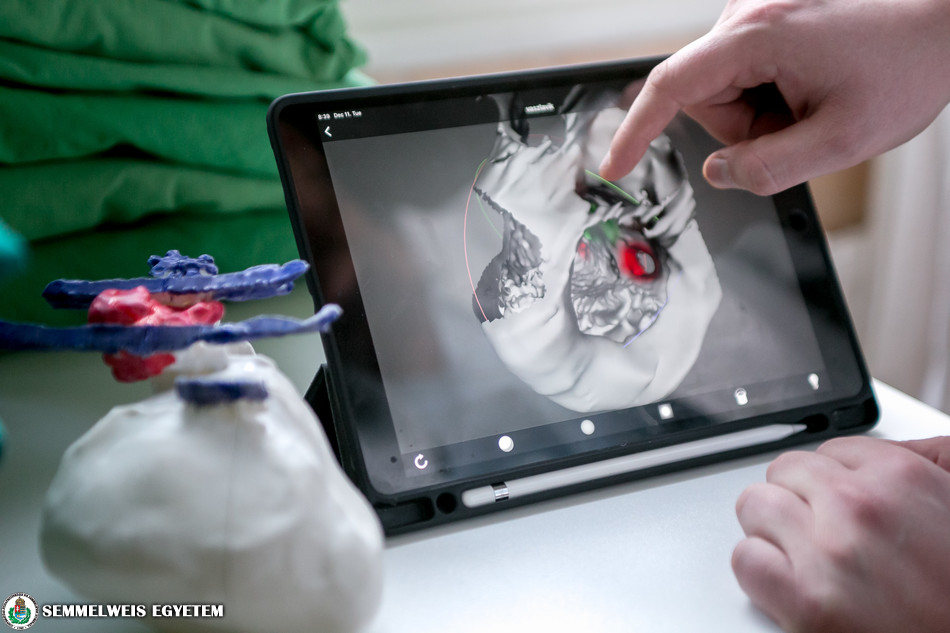
Dr. Imre J. Barabás has always wanted to bring the fields of medical science and engineering and technology closer together, and he had been working towards this since his first year, but he did not expect to be involved in such an advanced project so soon. In addition to the patent and the awards, an opportunity opened up to act as a course director and presenter for Pázmány Péter Catholic University and Semmelweis University’s joint course on medical-engineering innovations (whose lecturer is Rector Dr. Béla Merkely). Among the successes so far, he is particularly proud to have won the award for the most innovative young researcher at a recently organized joint cardiovascular training course of the American Cleveland Clinic and the Vienna General Hospital in Salzburg. As a result, he recently introduced the patent at the Vienna Clinic, where a cooperation will begin between the two universities in 2019 regarding “Mathematical prediction-based artificial heart implantation in 3D design and directional implantation based on 3D print modelling”.
Eszter Keresztes
Photography: Attila Kovács – Semmelweis University
Translation: Faye Gillespie
